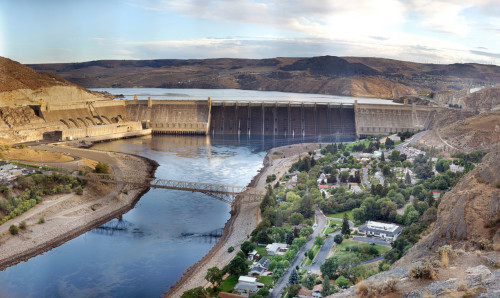SUBSCRIBE TO THE FREE NEWSLETTER
Where to view native camas: Mount Pisgah
If you’re looking to get out for a hike near Eugene or Springfield, Oregon, you’ll definitely want to check out Cascadia Magazine hiking columnist Craig Romano’s latest trail profile: Mount Pisgah.
It’s a moderately difficult hike that takes you to views of the surrounding Willamette Valley. It’s a great way to experience the unique oak savanna ecosystem, and in late spring and early summer it’s bursting with wildflowers. It’s one of the best places in Cascadia to see camas in bloom–the flowering plant that has been an essential food source to Indigenous people throughout the bioregion.
Head online to Cascadia Magazine and check out the full guide here, complete with driving directions, route description, and gorgeous photos.
We’re a reader-supported publication, and we depend on the generous financial support of readers like you. Help us make our goal of $10,000 during our Spring Fund Drive by visiting our donate page. Thanks!
Salmon on the upper Columbia? Report says it’s possible.
OPB looks at a new report that asserts that if fish passage were created around Chief Joseph and Grand Coulee Dams, salmon and steelhead would survive reintroduction in the upper Columbia, where they’ve been absent for 80 years. Meanwhile, The Tyee has an extensive investigation by Andrew Nikiforuk into a serious outbreak of sea lice in British Columbia fish farms that’s threatening wild salmon. And CBC reports on “incidental catch”–accidental killing of wild salmon–at BC fish farms.
Oregon cap & trade bill out of committee + plastic bag ban passes
Oregon’s ambitious cap & trade bill, which would put a price on carbon emissions with the goal of 80 percent reduction from 1990 levels by 2050, passed out of committee and will go to a vote, OPB reports. The OR legislature also passed a ban on plastic bags, while Canada (including BC) announced plans to end single-use plastics by 2021. In related news, High Country News looks at sustainable affordable housing projects in Portland that offer a hint of what a Green New Deal might look like.
Will Fraser valley get an overdose protection site?
The Star Vancouver looks at the effort to get an overdose protection site started in the Fraser River valley east of Vancouver. A pop-up site created by activists was shut down by the RCMP, and local officials deny they had supported the efforts. Meanwhile activists urged BC solicitor general Mike Farnsworth to reconsider his rejection of decriminalizing opioids. The BC minister of health in April urged the province to relax enforcement of drug laws to help deal with the overdose crisis.
Oregon to allow pot to cross state lines
OPB notes that the Oregon legislature passed a bill that will allow cannabis to be exported to or imported from states where it is legal (border states that qualify are California, Nevada, and Washington). But a federal law would also need to be passed. The Salem Reporter observes that thousands of Oregonians will be able to void their marijuana convictions soon. And a series of features at Willamette Week looks at the swarms of tourists arriving in Portland– an amazing 11 percent of visitors surveyed in 2017 said they traveled to Portland to experience legal pot.
Spokane needs a new flag
Okay, we’ll just say it: Spokane’s city flag sucks. It’s cheesy and ugly, and the city has approved a committee to work on a redesign. Daniel Waters at the Inlander has a tongue-firmly-in-cheek series of suggestions, including:
“Marmot skull and crossbones.
Scratch-and-sniff flag that smells like lilacs.
Solid white flag representing our city’s long history of supporting diversity and inclusion.
Illustration of the Space Needle with a big red X stamped over it.”
I’m fond of the one with the motto, “Spokane. It’s okay, I guess.”
Kathleen Alcala hunts geoducks
Yes! magazine has a lovely essay by Kathleen Alcala on joining her neighbor on Bainbridge Island, WA as he digs for huge geoduck clams during a low tide. It’s a detailed look at foraging for food in a way that’s not so common these days. “When the hole was over 3 feet deep, he set his shovel aside and threw himself full-length upon the sand, reached down into the excavation, and grabbed the geoduck by the neck. The trick is to extract both the neck and the shell. If you sever the neck, you cannot legally keep it.” Read the full essay here. It’s an excerpt from Alcala’s latest book The Deepest Roots.
That’s today’s grab-bag of news, environmental reporting, and culture from all across the Cascadia bioregion. If you appreciate this newsletter, please make a contribution to our Spring Fund Drive so you can continue to receive it and all the great original content at Cascadia Magazine. –Andrew Engelson

